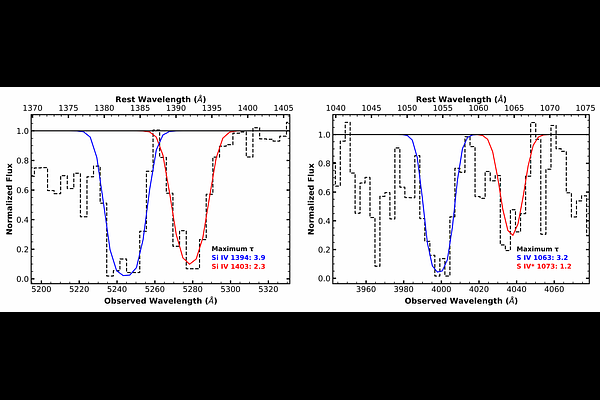DESI survey of S IV absorption outflows in quasars: Contribution to AGN feedback and comparison with [O III] emission outflows

DESI survey of S IV absorption outflows in quasars: Contribution to AGN feedback and comparison with [O III] emission outflows
Mayank Sharma, Nahum Arav, Maryam Dehghanian, Gwen Walker, Kyle Johnston, Matthew Kaupin, Justin Gandhi
AbstractQuasar outflows can play a crucial role in the evolution of their host galaxies through various feedback processes. This effect is expected to be particularly important when the universe was only 2-3 billion years old, during the period known as cosmic noon. By utilizing observations from the Dark Energy Spectroscopy Instrument (DESI), we conduct a survey of high-ionization quasar outflows at cosmic noon, with the aim of doubling the current sample of such outflows with distance and energetics determination. We also aim to compare these properties to those derived from spatially resolved outflows in similar quasars probed through Integral Field Spectroscopy (IFS). In a sample of 130 quasars we detect signatures of high-ionization outflows in the form of a S IV trough in eight objects. We characterize the physical conditions of these outflows by determining their total hydrogen column density ($N_H$), ionization parameter ($U_H$), and electron number density ($n_e$). The detected outflows show complex kinematic structures with a wide range in blueshifted velocities (100$-$4600 km s$^{-1}$). We locate five out of the eight outflows at distances between 240$-$5500 pc away from the central source. From the combined sample of 15 high-ionization S IV outflows at cosmic noon, we find a high fraction (up to 46 %) of them to be powerful enough to contribute significantly to multi-stage AGN feedback processes. Their mass outflow rates and kinetic luminosities are also found to be consistent with spatially resolved outflows in a luminosity and redshift matched sample of quasars. Comparison with previous spectra reveals interesting variations in some objects, with two cases of emerging high-velocity broad absorption line features with velocities of $-$8000 and $-$39,000 km s$^{-1}$. An impressive case of four line-locked Si IV outflow systems is also revealed in one of the objects.